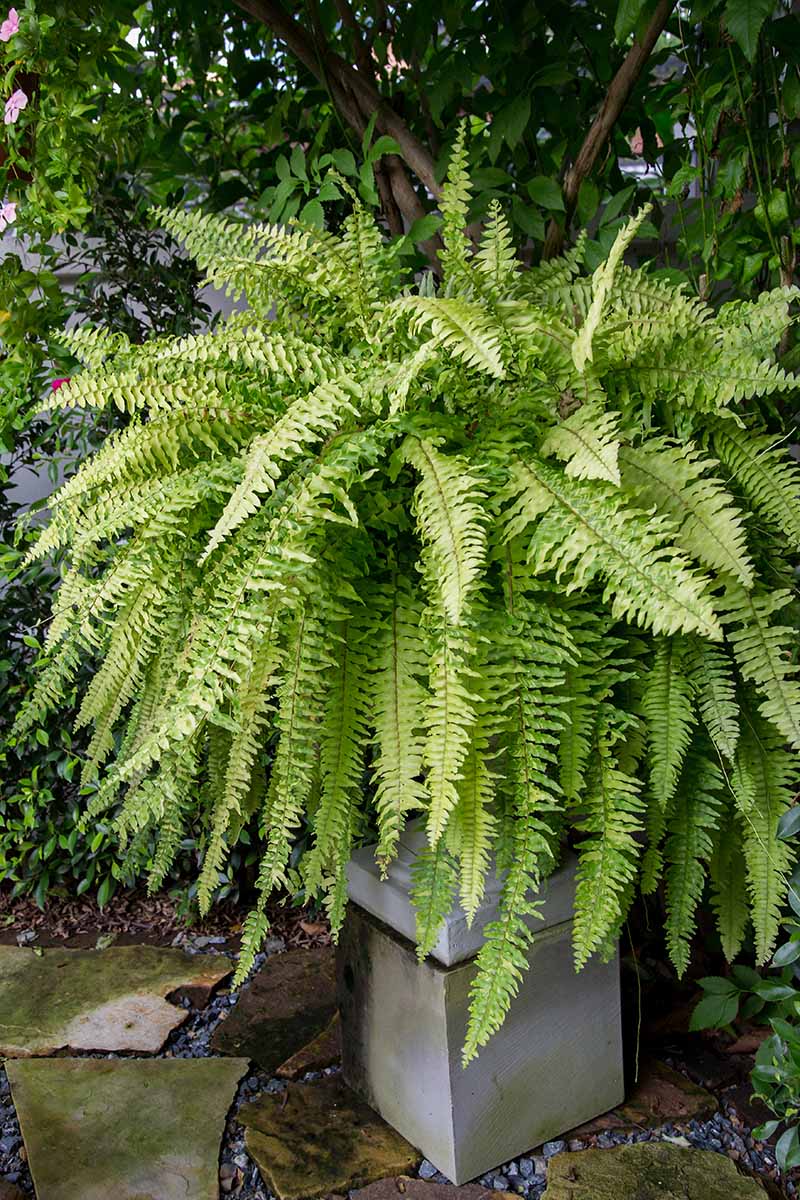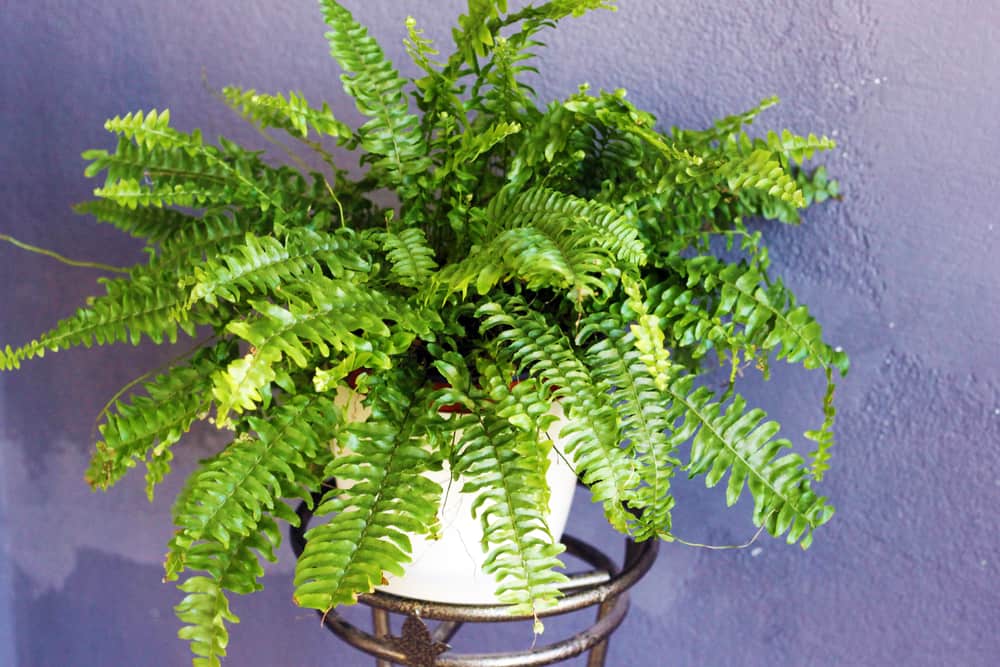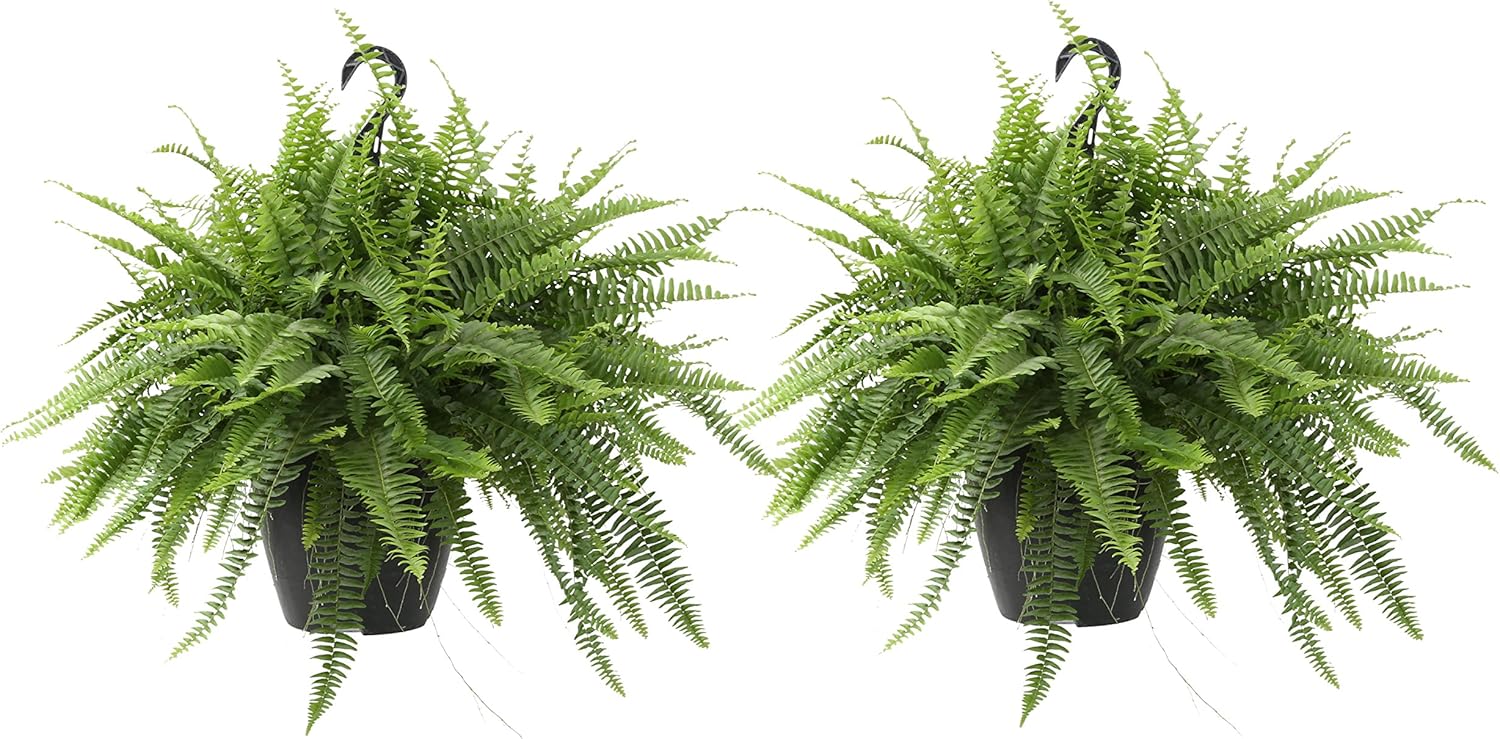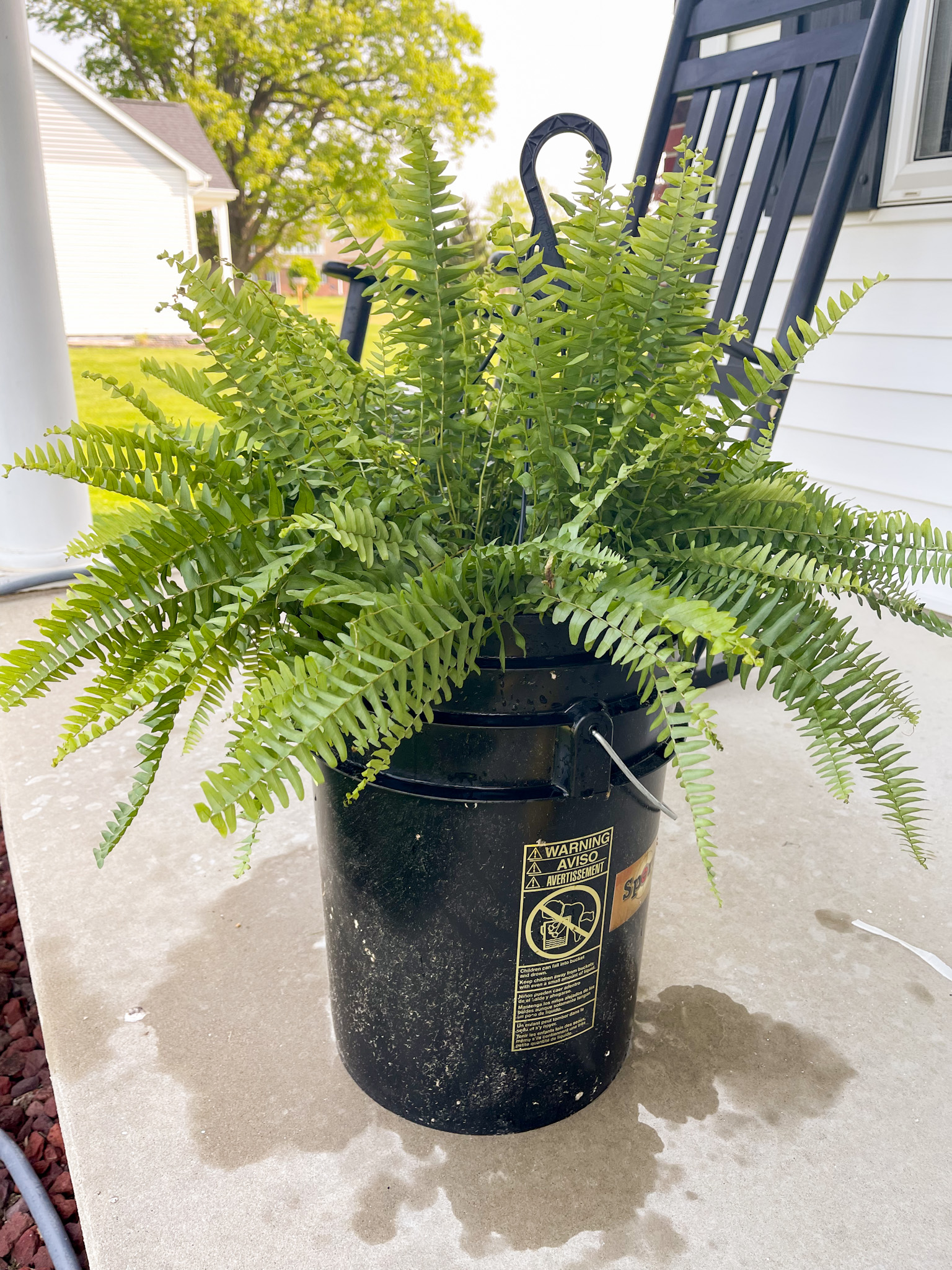Understanding Boston Ferns’ Natural Habitat
Boston ferns (Nephrolepis exaltata) are native to tropical and subtropical regions of the world, where they thrive in humid, shaded environments. These plants have adapted to grow in areas with high levels of rainfall, moderate temperatures, and filtered sunlight. In their natural habitat, Boston ferns typically grow on the forest floor, where they can absorb moisture and nutrients from the surrounding environment.
The ideal conditions for Boston ferns include temperatures between 65°F to 75°F (18°C to 24°C), humidity levels above 50%, and bright, indirect light. They prefer well-draining soil that is rich in organic matter, such as leaf mold or compost. By understanding the natural habitat of Boston ferns, it becomes clear that they require specific conditions to thrive, which can be challenging to replicate outdoors.
However, with proper care and attention, it is possible to create an environment that allows Boston ferns to survive and even thrive outside. By considering factors such as temperature, humidity, and light exposure, gardeners can increase the chances of success when growing these plants outdoors. But can Boston ferns survive outside? The answer lies in understanding the specific needs of these plants and providing the necessary conditions for them to flourish.
Can Boston Ferns Survive Outside: Factors to Consider
When considering growing Boston ferns outside, it’s essential to understand the key factors that affect their ability to survive and thrive in outdoor conditions. Temperature, humidity, light exposure, and wind are all critical elements that can impact the health and well-being of these plants.
Temperature is a crucial factor, as Boston ferns prefer temperatures between 65°F to 75°F (18°C to 24°C). Prolonged exposure to temperatures above 80°F (27°C) or below 55°F (13°C) can cause stress, leading to disease or pest issues. Humidity is also vital, as Boston ferns thrive in environments with high humidity, typically above 50%. Low humidity can cause the leaves to become scorched and the plant to become stressed.
Light exposure is another critical factor, as Boston ferns prefer bright, indirect light. Direct sunlight can cause the leaves to become scorched, while insufficient light can lead to weak and spindly growth. Wind can also be a challenge, as Boston ferns prefer protection from strong gusts, which can cause damage to the leaves and stems.
Considering these factors, it’s clear that growing Boston ferns outside can be challenging. However, by understanding the specific needs of these plants and providing the necessary conditions, gardeners can increase the chances of success. But can Boston ferns survive outside? The answer lies in providing the right environment and care. By carefully evaluating the outdoor conditions and taking steps to mitigate any challenges, gardeners can enjoy the beauty of Boston ferns in their outdoor spaces.
In addition to these environmental factors, gardeners should also consider the potential risks associated with growing Boston ferns outside, such as pests, diseases, and extreme weather conditions. By being aware of these potential challenges, gardeners can take proactive steps to prevent or mitigate them, ensuring the health and well-being of their plants.
How to Acclimate Your Boston Fern to Outdoor Conditions
Acclimating your Boston fern to outdoor conditions is crucial for its survival and success. To ensure a smooth transition, follow these steps to gradually introduce your fern to the outdoors.
Start by selecting a location with bright, indirect light and temperatures between 65°F to 75°F (18°C to 24°C). Avoid areas with direct sunlight, as it can cause the leaves to become scorched. If possible, choose a location with some shade, especially during the hottest part of the day.
Next, prepare the soil by adding a layer of compost or well-rotted manure. This will help to improve the soil’s fertility and drainage, which is essential for Boston ferns. If your soil is heavy clay or sandy, consider adding organic matter to improve its structure.
Once you’ve prepared the soil, it’s time to acclimate your Boston fern to outdoor conditions. Start by moving the fern to a shaded area outdoors for a few hours a day. Gradually increase the duration over the next 7-10 days, until the fern is spending the entire day outdoors.
During this acclimation period, keep a close eye on your fern’s condition. Check for signs of stress, such as yellowing leaves or droopy fronds. If you notice any of these symptoms, it may be necessary to slow down the acclimation process or provide additional care.
By following these steps, you can help your Boston fern to thrive in outdoor conditions. Remember to provide regular care and maintenance, including watering, fertilizing, and pruning, to ensure your fern remains healthy and vibrant. With proper care and attention, your Boston fern can survive and even thrive outside, adding beauty and elegance to your outdoor space.
Choosing the Right Location for Your Boston Fern
When it comes to growing Boston ferns outside, choosing the right location is crucial for their survival and success. The ideal location should provide the right balance of sunlight, shade, wind protection, and proximity to water sources.
First, consider the sunlight requirements of your Boston fern. While they prefer bright, indirect light, direct sunlight can be too intense and cause the leaves to become scorched. East- or west-facing locations are ideal, as they provide gentle, indirect light.
Next, think about the shade requirements of your Boston fern. While they prefer bright light, they also need some shade to prevent scorching. Consider providing shade for your fern during the hottest part of the day, either by using a shade cloth or by placing it under a tree or other shaded area.
Wind protection is also essential for Boston ferns. Strong winds can cause damage to the leaves and stems, so choose a location that provides some protection from the wind. This could be a location near a building or a wall, or a spot that is surrounded by other plants or trees.
Finally, consider the proximity to water sources. Boston ferns prefer moist soil, so choose a location that is close to a water source, such as a hose or a rain barrel. This will make it easier to keep the soil consistently moist.
By considering these factors, you can choose the ideal location for your Boston fern and help it to thrive outside. Remember to also provide regular care and maintenance, including watering, fertilizing, and pruning, to ensure your fern remains healthy and vibrant.
Some popular locations for Boston ferns include patios, decks, and porches. These areas provide the right balance of sunlight, shade, and wind protection, and are often close to water sources. Consider adding a Boston fern to one of these areas to add some greenery and beauty to your outdoor space.
Outdoor Care and Maintenance for Boston Ferns
To ensure the health and vitality of your Boston fern, regular care and maintenance are essential. Here are some tips to help you keep your fern thriving outdoors:
Watering: Boston ferns prefer moist soil, but make sure not to overwater. Check the soil daily, and water only when the top inch of soil feels dry to the touch. Avoid getting water on the leaves or crown of the plant, as this can cause rot and other problems.
Fertilizing: Feed your Boston fern with a balanced, water-soluble fertilizer during the growing season (spring and summer). Dilute the fertilizer to half the recommended strength to avoid burning the roots.
Pruning: Prune your Boston fern regularly to maintain its shape and promote healthy growth. Remove any dead or damaged fronds, and trim back overgrown stems to encourage new growth.
Pest Management: Check your Boston fern regularly for pests like spider mites, mealybugs, and scale. If you find any, treat the plant with insecticidal soap or neem oil according to the product’s instructions.
Soil Care: Boston ferns prefer well-draining, rich soil with a pH between 6.0 and 7.0. Add compost or well-rotted manure to the soil to improve its fertility and drainage.
By following these care and maintenance tips, you can help your Boston fern thrive outdoors. Remember to monitor your plant’s condition regularly and adjust your care routine as needed. With proper care, your Boston fern can survive and even thrive outside, adding beauty and elegance to your outdoor space.
Some additional tips to keep in mind include:
- Keep your Boston fern away from extreme temperatures, such as those near heating or cooling vents, fireplaces, or drafty windows.
- Avoid exposing your Boston fern to direct sunlight, especially during the hottest part of the day.
- Use a humidifier or mist your Boston fern regularly to maintain a humid environment, especially during dry weather.
Common Challenges and Solutions for Outdoor Boston Ferns
While Boston ferns can thrive outdoors, they can also be susceptible to certain challenges. Here are some common problems that may arise and some solutions to help you overcome them:
Pests: Boston ferns can be vulnerable to pests like spider mites, mealybugs, and scale. To prevent infestations, inspect your plant regularly and treat any problems promptly. Use insecticidal soap or neem oil to control infestations, and make sure to follow the product’s instructions.
Diseases: Boston ferns can be susceptible to diseases like root rot, leaf spot, and crown rot. To prevent diseases, make sure to water your plant properly, avoid getting water on the leaves or crown, and provide good air circulation. If you notice any disease symptoms, treat the plant with a fungicide and remove any affected areas.
Extreme Weather Conditions: Boston ferns can be sensitive to extreme weather conditions like high winds, frost, and intense sunlight. To protect your plant, provide wind protection, bring the plant indoors during frosty weather, and provide shade during intense sunlight.
Other Challenges: Boston ferns can also be susceptible to other challenges like nutrient deficiencies, soil pH imbalances, and physical damage. To prevent these problems, make sure to fertilize your plant regularly, check the soil pH regularly, and handle the plant with care.
By being aware of these common challenges and taking steps to prevent them, you can help your Boston fern thrive outdoors. Remember to monitor your plant’s condition regularly and adjust your care routine as needed.
Some additional tips to keep in mind include:
- Keep an eye out for signs of pests or diseases, and take action promptly to prevent the problem from spreading.
- Provide your Boston fern with a balanced fertilizer to promote healthy growth and prevent nutrient deficiencies.
- Make sure to repot your Boston fern every 1-2 years to provide fresh soil and a larger pot if necessary.
Creating a Thriving Outdoor Environment for Your Boston Fern
Creating a beautiful and thriving outdoor environment for your Boston fern can be a rewarding experience. Here are some ideas and suggestions to help you create a stunning outdoor space:
Companion Plants: Boston ferns can be paired with a variety of companion plants to create a visually appealing and thriving outdoor environment. Some popular companion plants include impatiens, coleus, and begonias.
Garden Design: Consider creating a garden design that incorporates your Boston fern as a focal point. You can use a variety of plants, flowers, and decorative elements to create a beautiful and thriving outdoor space.
Decorative Elements: Add some decorative elements to your outdoor space to create a unique and inviting atmosphere. Some popular decorative elements include garden statues, bird baths, and outdoor lighting.
Container Gardening: Consider using container gardening to create a beautiful and thriving outdoor environment for your Boston fern. This can be a great way to add some color and texture to your outdoor space.
Vertical Gardening: If you have limited space, consider using vertical gardening to create a beautiful and thriving outdoor environment for your Boston fern. This can be a great way to add some greenery to your outdoor space without taking up too much room.
By incorporating these ideas and suggestions into your outdoor space, you can create a beautiful and thriving environment for your Boston fern. Remember to choose plants and decorative elements that complement your fern and provide the right conditions for it to thrive.
Some additional tips to keep in mind include:
- Choose plants that have similar growing conditions to your Boston fern to ensure they thrive in the same environment.
- Consider using a trellis or other support system to help your Boston fern grow and thrive.
- Make sure to leave enough space between plants to allow for proper air circulation and growth.
Conclusion: Enjoying the Beauty of Boston Ferns Outdoors
In conclusion, Boston ferns can thrive outdoors with the right care and attention. By understanding their natural habitat, choosing the right location, and providing proper care and maintenance, you can enjoy the beauty of these stunning plants in a natural setting.
Remember, can Boston ferns survive outside? The answer is yes, with the right conditions and care. By following the tips and advice outlined in this article, you can create a thriving outdoor environment for your Boston fern and enjoy its beauty for years to come.
The rewards of growing Boston ferns outdoors are numerous. Not only do they add a touch of elegance and sophistication to your outdoor space, but they also provide a natural and calming atmosphere that can be enjoyed by all.
So why not give it a try? With a little patience and care, you can enjoy the beauty of Boston ferns in your outdoor space. Whether you’re a seasoned gardener or just starting out, these stunning plants are sure to bring joy and beauty to your life.
By following the guidelines outlined in this article, you can create a thriving outdoor environment for your Boston fern and enjoy its beauty for years to come. Happy gardening!








